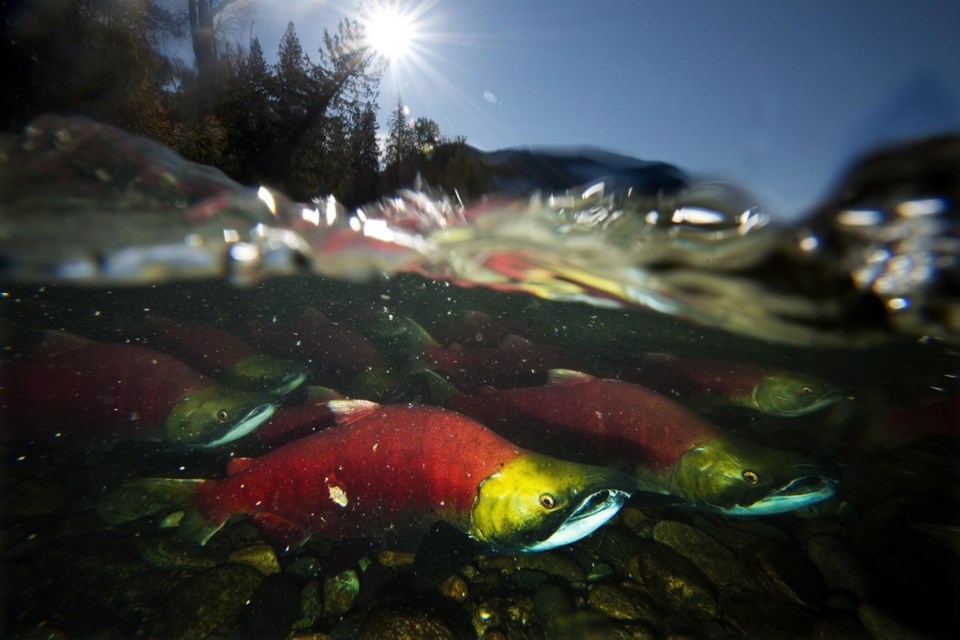Climate change is knocking some Pacific salmon out of alignment with the growth of the ocean plankton they eat to survive, new research says.
In the largest data set ever gathered on the timing of juvenile salmon migration, research found the changing climate is causing some salmonpopulations to migrate earlier out of step with plankton blooms that are also affected by changing weather patterns.
Lead author Sam Wilson said that as climate change continues the two will match less and less, putting salmon survival at risk.
"The coastal ocean is changing in one way and Pacific salmon are changing in a myriad of other ways and those ways don't always align," said Wilson, a post-doctoral researcher in the salmon watersheds lab at Simon Fraser University.
Numerous species of Pacific salmon are at risk or even endangered for several reasons, including overharvesting and lack of habitat protections. Wilson suggests the response by the young salmon may be a coping mechanism that helps them survive and reinforces the need to protect biodiversity.
Wilson spent almost five years collecting data from research projects around North America on 66 wild Pacific salmon populations stretching from Oregon to British Columbia to Alaska and dating back at least 20 years.
She found that some salmon populations are migrating earlier, with pink and chum changing fastest at seven days earlier per decade, while other species saw no change on average.
On average, fish are still managing to find the plankton they need, Wilson said, but climate change means they'll be matching up with the blooms less and less.
Major events such as the marine heat wave known as "The Blob," which persisted in the Pacific Ocean between 2013 and 2016, led to a "big mismatching event" and decreased young salmon survival, she said.
"And that was a harbinger for future climate change."
The research found that the changes in salmon migration were not predictable, with populations of the same species of salmon behaving differently.
Wilson said that could be a challenge for people in charge of managing and protecting the species, who often use one population as an indicator to predict how the rest of the species is managing.
"So, they might say, Chilko sockeye are not changing their migration timing so we don't have to worry about it. Let's move on to the next topic," she said.
"But those changes aren't predictable, through space and time."
The study's authors recommend avoiding a "one-size-fits-all approach" to management, she said.
For those outside of research or salmon management, that confusing lack of predictability is something to be celebrated, Wilson said.
She said the fact that populations have responded differently is an example of biodiversity and a sign salmon have tools to deal with climate change.
"As a scientist, I can tell you if you want to preserve biodiversity, you need to preserve the habitat that underpins that biodiversity," she said.
"This unpredictability gives me a headache as a scientist trying to predict it. It might give a manager a headache trying to predict it. But it also protects salmon. So, we need to maintain that diversity if we want to keep having salmon in our ocean, and in our lakes and on our tables in future."
This report by The Canadian Press was first published May 4, 2023
Ashley Joannou, The Canadian Press



